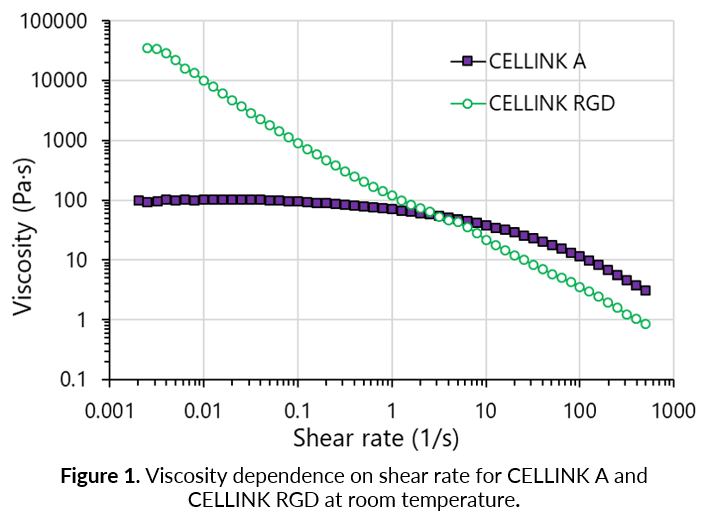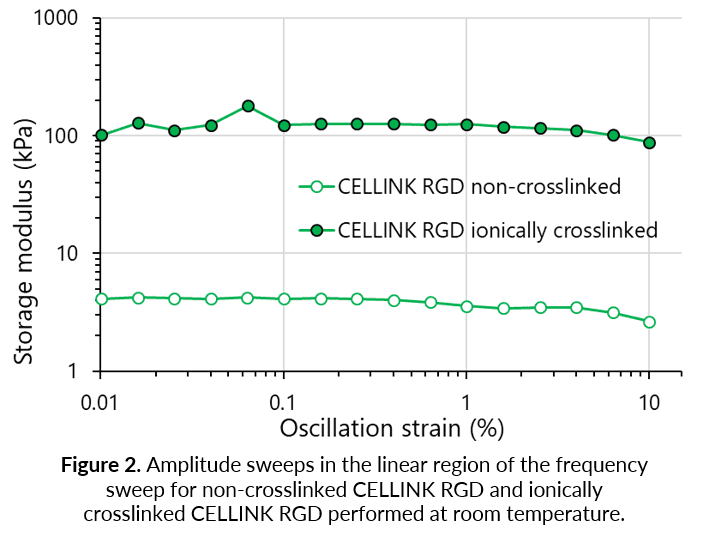Droplet encapsulation
Products used:
CELLINK RGD ➝
CELLINK A (discontinued)
BIO X ➝
Drop on drop
In this video, we demonstrate printing of three-layered grids with different infill densities using GelXA SKIN. The GelXA SKIN cartridges were placed in each of the three pneumatic printheads. All filaments were extruded through 22G nozzles at 5-15 kPa with 5 mm/sec on a Petri dish surface. Printhead 1 printed one layer with rectilinear pattern with infill density of 80%, printhead 2 printed two layers with rectilinear pattern with 20% infill density and finally, printhead 3 printed three grid layers with infill density of 10%. Printed layers of different infill density can represent three layers in a skin tissue model: epidermis, papillary dermis and reticular dermis, respectively. GelXA SKIN constructs can be crosslinked by adding our crosslinking agent enhanced with thrombin, which enzymatically converts fibrinogen component into fibrin, thus creating a stable network. After one medium wash, your cell laden droplets are ready to be cultured in standard cultivation environment. In addition, GelXA constructs can be also by photocrosslinked.
The G-code to this three-layered grid structure can be found on Bioverse!
Less viscous than CELLINK A
CELLINK RGD is a viscous bioink and therefore makes a stable inner core. On the other hand, CELLINK A bioink has a lower viscosity, which makes it a good bioink for encapsulating the inner core (Figure 1). CELLINK A will form a shell around the printed CELLINK RGD droplet, creating a protective layer for the cells in CELLINK RGD.

Crosslinked vs non-crosslinked CELLINK RGD

Application






